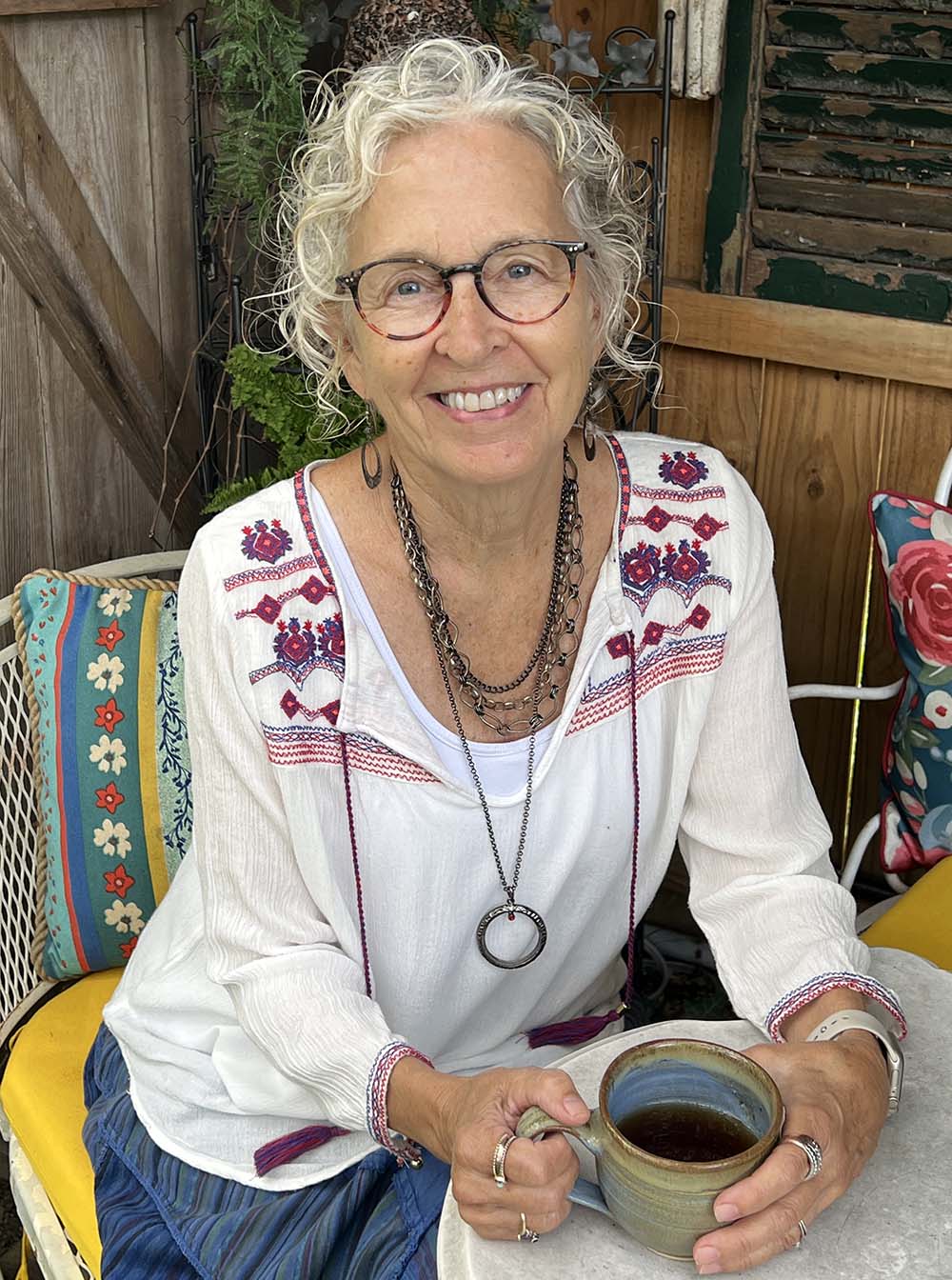I have 3 rain barrels and due to living in a small town with public water, at the time this seemed like a great solution. I am passionate about organic gardening so what could be more organic than rainwater, or so I thought.
.

Two things happened in the last year to make this the time to install an irrigation system.
First, I found a filter for my hose bibb to remove chlorine chloramines, VOCs, pesticides, and herbicides. Boogie-Blue Plus+ is available on Amazon.
This is a game changer for organic growers on public water.
Secondly, during one of my Master Gardening classes, my rain barrel bubble was burst! I did not know that most asphalt roofing shingles are treated with fungicides and contain carcinogens!! This water filled my rain barrels and was then put on my vegetables.
The first year I lived here, my garden was surprisingly healthy and fruitful.

The next year (last year) was even worse. Plants were spindly, growth stunted, and produce was almost non-existent.

So, I began looking at videos from fellow bloggers to find the easiest way to install irrigation, and finally decided to follow Deanna from Homestead and Chill. Her terrific video showing how to install dripline irrigation is simple and easy to follow and gave us the confidence to move forward. Plus, she provides a list of items needed and where to find them. Awesome resource for this project.
Our kitchen garden irrigation project was first and went without a flaw. Six beds, fully self-sufficient for their normal watering needs. I do supplement every week to 10 days for feedings and hand watering seeds between scheduled irrigation watering, as needed.



Our irrigation is divided into 3 zones. Through the Orbit programmable 3 Outlet Hose Watering Timer, we are able to set the timer to the time each zone is watered, for how long and how often to repeat.

The key is to get the right amount of water to make sure that the plants are watered, but not soaked, and to let them dry out slightly in between watering. For this, I turned back to Deanna at Homestead and Chill. She explains in detail, in her above blog post, how to determine this depending on your circumstances.
For me, I decided to start with 45 minutes every 2 days in my kitchen garden. Due to the location of this garden, it can be 10 to 30 degrees hotter than the rest of the yard. And, because the raised beds are subjected to the heat, causing the soil to dry out on the top, but also from the sides they dry out sooner than other beds.
In the rest of the yard, the gardens get watered 45 minutes every 3 days.
It is important to monitor this every day to determine if adjustments need to be made. Keep in mind that further adjustments may be needed depending on rainfall and heat during the summer. So, while you are doing your morning walk through your garden, checking for produce, pests deadheading, or appreciating the beauty, just look to see if there are dry spots or puddles.
The question that I pondered was whether it is best to put in the driplines first and plant later or to plant so that I know where to put the lines, especially in the willy-nilly, anything goes part of my yard. Hands down, put in the lines first and then you know where the emitters are so that you can plant near them. You can always move the lines around if necessary to fine tune your beds.
I am extremely happy with the results. My plants look healthier, and I have extra time every morning to do other things, like deadheading which has been at the bottom of my must do list the last 2 years! And I could not believe how reasonable the pricing was. If my time is worth anything, the irrigation cost is a real bargain!

Happy Gardening!


